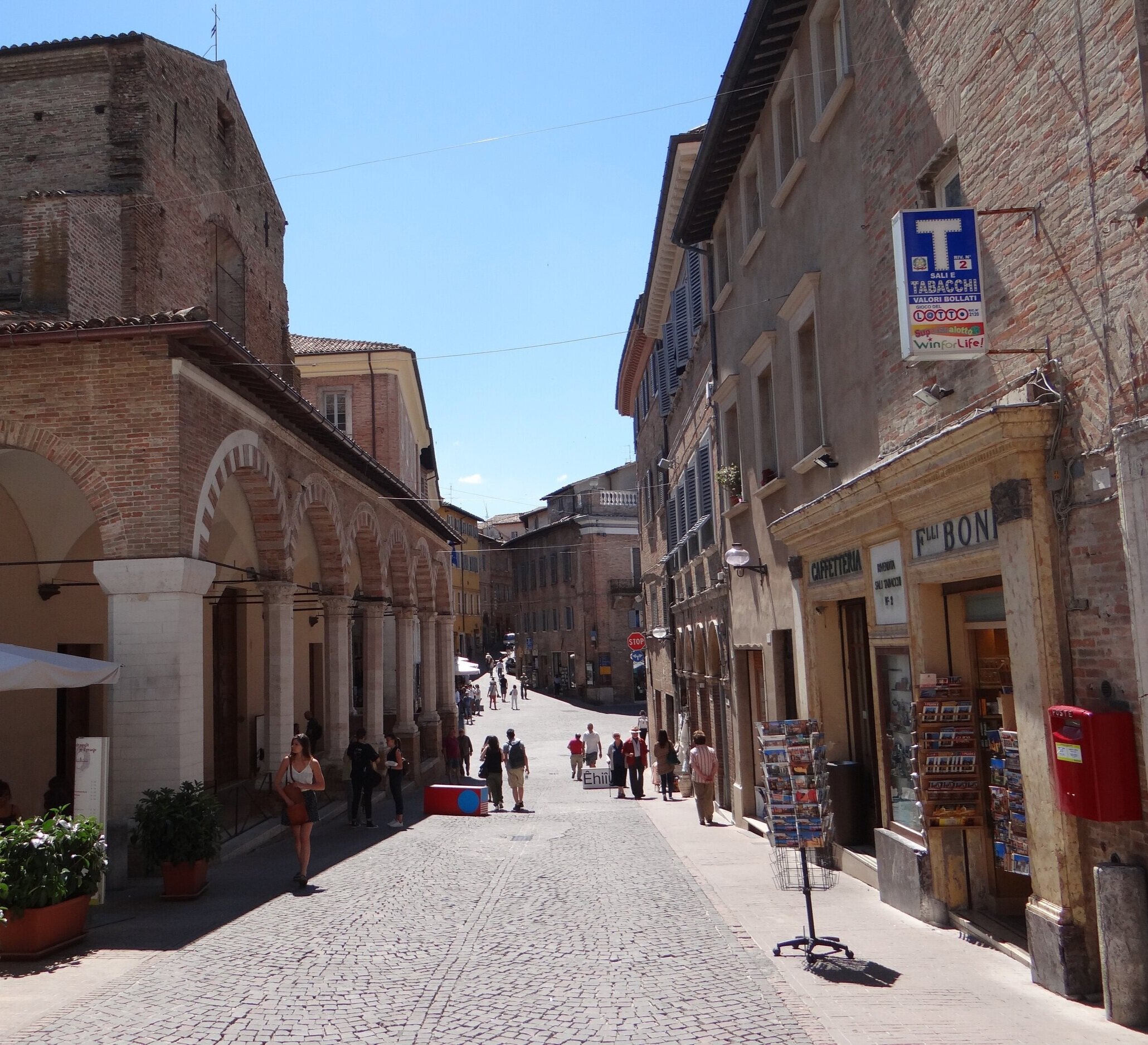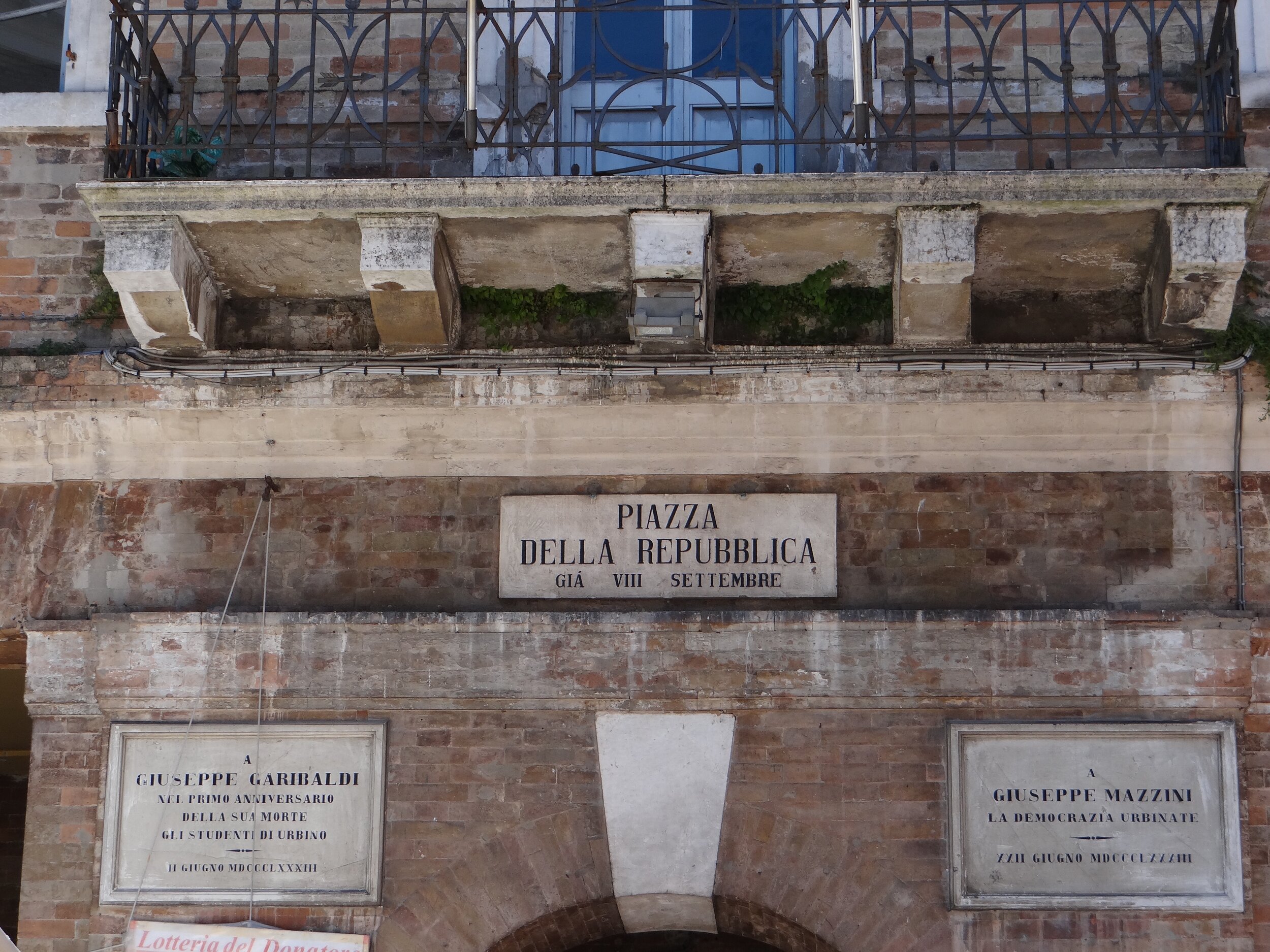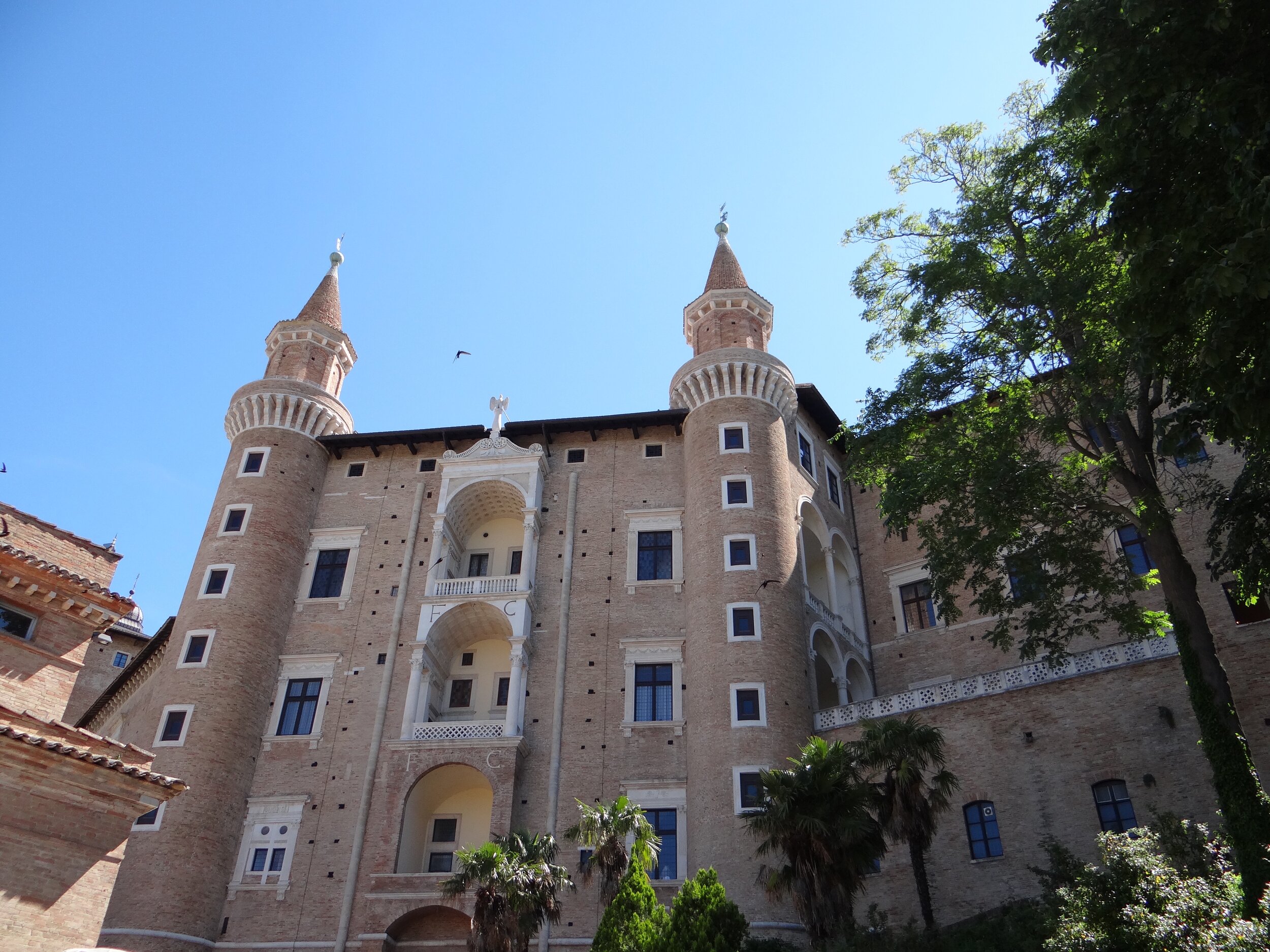Urbino, home of Raphael
Perched on the north-eastern slopes of the Apennine mountains and roughly 30 miles from the Adriatic shores, the walled city of Urbino is a perfect way to step back 500 years in time, all the way back to Renaissance Italy.
Unlike the larger and way more crowded historical cities west of the Apennines, Urbino has preserved, within its stone walls, the charm of an idealized Italian Renaissance, complete with illustrated princes, warring “condottieri” and sublime artists.
Although nowadays Urbino is essentially a picturesque and placid provincial backwater, in the mid 15th century this one of the centres of power in the Italian peninsula and a hub of artistic activity.
The famous painter Raphael, who, together with Michelangelo and Leonardo, formed what is perhaps the best known trifecta of the history of art, was born in Urbino. In fact, he was known as “Raphael d’Urbino”.
The architect Bramante, another Renaissance super-star, also called Urbino home.
And, although these two artists worked mostly in other cities there is no shortage of Renaissance art in Urbino.
The local dynasty, the Montelfeltro ducal family, and, very particularly, duke Federico III de Montefeltro, who ruled Urbino for some forty years in the mid-15th century, turned this hilltop city into one of the centres of culture in Renaissance Italy.
In addition to being a “condottiero”, or one of the princes and warlords that played power politics during that messy period of Italian history, Federico de Montefeltro fully embodied the spirit of the “Renaissance man”. In addition to its political, military and diplomatic activities, he sponsored numerous artists and aim to attract artists and scientists to his court. Most of what one see today at the Palazzo Ducale, including the impressive art collection at the Galleria Nazionale delle Marche, is his legacy.
What to see and what to do in Urbino: ascent to the Old Town
Just like in the good old times of Duke Federico, visitors still enter Urbino through one of the gates in its walls (although the fortifications have suffered some modifications since the 15th century!).
We entered Urbino through the Porta Valbona, that is located next to the main car (and bus) park. This access point has the advantage of being located next to one of the most curious architectonical elements in Urbino, the “Rampa Elicoidale”.
What is the “rampa elicoidale”? Urbino is a rather steep city, with the ducal palace (“palazzo ducale”) dominating from its highest point. As there were no escalators or lifts in the 15th century, what they did was build a tower with an helicoidal ramp inside (as perfectly described by Italian name) so that duke Federico could come and go from his palace, from the upper town to downtown, while on horseback!
Once in the upper part of town, and on our way to the palazzo ducale, we get to the center of the historical city, around the Piazza della Repubblica.
It must be said, though, that despite its postcard-like aspect, the centre of Urbino experienced some changes since its apogee in the Renaissance period, particularly in the 19th century, when some of the main streets were enlarged and reorganized. This historical area, though, has undoubtedly retained its charm.
A short walk further uphill and we get to the political and religious centre of Urbino. Here is the Palazzo Ducale, the Montefeltro’s center of power, as well as the cathedral (the Duomo of Urbino) and several other churches.
Duomo of Urbino with its neoclassic facade
Although it can trace back its roots to at east the 11 century, the cathedral Urbino got a neoclassic face-lift in the early 19th century, when it was reconstructed following serious damage by an earthquake in the late 18th century.
Brick-like ochre tones are prevalent throughout Urbino’s old town, including the outer part of the ducal palace. As you can see in the pics below, only some neoclassic decor elements, such as some statues and church porticoes and facades, introduce some touches of colder white colour.
The ducal palace (“palazzo ducale”) is without doubt the top thing to see in Urbino.
This was, obviously, the centre of political power for a long period of time and the art-sponsoring activities of Federico de Montefeltro have left their mark. Even five centuries after his death and despite many works ending up in other cities, from Florence to Milan and Paris, as rulers and invaders came and went, the collection at the Galleria Nazionale delle Marche, hosted in the palace itself, is still one of the finest when it comes to Renaissance art.
Here you can find paintings by Raphael, Paolo Ucello, Piero della Francesca, or the great Titian.
Besides the art, the palace also offers an interesting glimpse onto the way of life in the princely courts of Renaissance Italy. Of particular interest is the private cabinet of Federico de Montefeltro, a space for the duke’s work and study full of references to what he saw as his role as a promoter of art and knowledge.
It is also possible to visit other areas of the palace such as what was the 15th century equivalent of a spa area, complete with hot and cold baths, located at the buildings lower levels in imitation of Roman termal baths.
The palace itself looks rather unassuming from the town side, with a rather unpretentious facade and an harmonious internal porticoed courtyard. One side of the palace, though, was built right on top of a cliff, with the walls (and different floors of the building), following the steep relief of the hill.
The ducal palace, perched on a hillside
Walking around the old town of Urbino
But, ducal palace and art collections aside, Urbino is also a place to enjoy outdoors.
Its historical centre, a UNESCO World Heritage Site, is pedestrianized, which makes for a pleasant city stroll along the city’s cobbled streets.
By walking down from the palace, past Piazza della Repubblica, and along the, aptly named, “Via Raffaelo”, you reach “Casa Santi”, the house where the great painter Raphael was allegedly born. Today it is a museum.
The house where the painter Raphael was born
The Marche region, where Urbino is located, is also known for its gastronomy and, if you are lucky enough to visit Urbino on market day you may get a chance to buy some local produce from street stalls, such as these truffles…
Where to eat in Urbino
Osteria Tanto Piacere
Via Vittorio Veneto, 29
61029 Urbino
This quite a small place off one of the old town’s main streets. When coming in, only a small part of the place is visible at first glance, because most tables are in a room downstairs.
Here you can taste some local specialities such as salami and other cold cuts, cheeses and the typical flat bread of the Marche (called “Crescia Sfogliata”), which is reminiscent of some flat, thin breads you find in Indian cuisine. It also has a rather impressive collection of local olive oils and wines.
The staff know their stuff too and are helpful in explaining which product is which, where they are from, etc. Great to eat pretty authentic food in a rather casual atmosphere.












